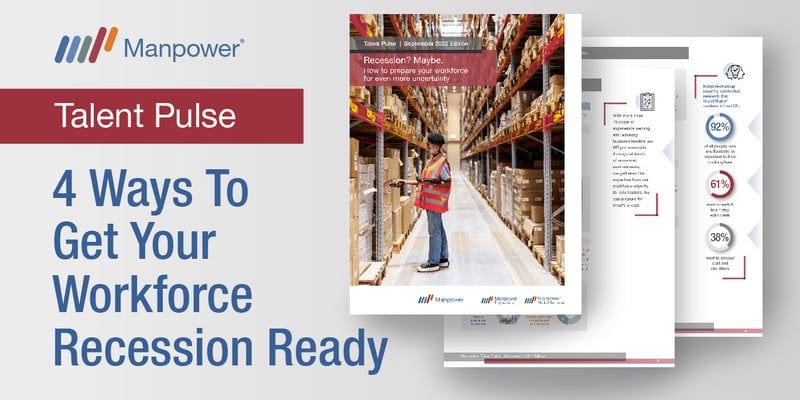In recent years we’ve seen a shift in people’s attitudes toward work. Where work was once thought to define who we are and how we fit in the world, work now needs to “work” for our whole lives.
So, what do we really want from work? Increasingly we want to be empowered to grow, nurture our physical and mental well-being, connect to our sense of meaning and purpose, and define success for ourselves.
When we asked U.S. workers what would help them thrive, 92% said flexibility was important - with 38% saying they would like to choose start and end times to their working day. Workers across different sectors and professions today want more choice over when, where and how they work. And pilot programs have shown that giving people more flexibility leads to a happier and more productive workforce.
Getting this right makes sense for individuals and for businesses. With talent shortages at a 16-year high and 74% of employers struggling to fill roles, the pressure is on to meet workers’ needs.
So, What Do Employers Need To Do?
Creating the right environment for people to thrive requires both empathy and trust. Shaping the culture of an organization has traditionally been a “top down” responsibility, led by People/HR teams, but in reality managers are at the forefront of workplace culture. Over half of employees who quit their jobs during the pandemic didn’t feel valued by their organization or their manager, or felt they didn’t belong. Managers are having daily conversations with workers about balancing their responsibilities, managing their days around childcare or elderly care, and ensuring they feel fulfilled and rewarded.
One of the most effective ways managers can help workers (and themselves) to feel more in control of their lives is by introducing Microsteps: small, science-backed steps that build sustainable healthy habits. These actions can help managers to support a thriving workforce.
Here Are Four Ways to Help Managers and Employees Thrive:
1. Shift from a workplace-centric to a human-centric culture
Work needs to be a place of psychological safety, where employees feel they can be honest without being judged. Equipping leaders and managers with the right skills to manage empathetically will enhance the employee experience.
More than ever, it’s important for managers to create an environment where authentic connections are possible, and where people feel comfortable bringing their whole selves to work — whether they’re in an office, working remotely, or in a hybrid workplace. Listening to people and showing that their views are of value builds trust and enhances connections with colleagues. One Microstep for managers to try is opening your next meeting with a personal question rather than a work-related one. Asking simple, direct questions about the other person shows respect and forges a deeper connection.
2. Redefine managementIt’s rare for people to have the innate ability to manage, but these skills can be learned. Helping managers develop their skills will enable them to better support people’s mental well-being and individual work needs.
Workers most impacted by the pandemic are those on the front lines – in retail, factories, and hospitals. With high levels of burnout across the board, managers have a role to play in encouraging positive behaviors to support well-being. Finding moments throughout the day to recharge and connect can have a big impact. Managers need to encourage these moments; it can be as simple as encouraging employees to take a walk outside during a break, take an actual lunch break, or focus on their breathing during a moment of stress instead of reaching for their phone.
3. Measure performance by output, not hoursAs Adam Grant, Professor of Management and Psychology at Wharton School, University of Pennsylvania and Thrive Board Member recently pointed out, “We should think of tasks that need completion... rather than hours.” To help workers thrive, greater flexibility must lead to a focus on what is achieved, rather than how, where or when it’s done.
For managers, acknowledging that presenteeism is not a measure of business success lends greater trust to individuals. Giving people flexibility enables them to maintain focus at work, helping to enhance productivity.
Managers can support this by encouraging employees to set “focus time” for deep work (and let others know by putting it on their calendars). They can encourage ending meetings 5 or 10 minutes early to allow everyone the time back to recharge and avoid virtual fatigue. And they can lead by example, by letting team members know when they step away from work — to be with family, to attend an appointment, or to sign off for the day. This shows that recharging isn’t a reward for working hard and burning out — it’s a part of work that allows us to avoid burnout and achieve our best performance.
4. Emphasize purpose-driven, meaningful workThe connection between purpose-driven work and thriving at work is clear. Nine out of ten employees would accept a pay cut to do more meaningful work.
How can managers help? They can bring an organization’s purpose to life by encouraging workers to look after themselves and the world around them; it starts with small steps that build connections between organizations and employees.
Starting meetings by asking workers how they’re feeling and what they’re grateful for acknowledges people’s purpose and what matters to them. Offering time out for volunteering demonstrates a commitment to doing good and having a positive impact on society.
Organizations have a responsibility for workers’ well-being and ultimately their ability to thrive. Leaders and managers have a huge impact on those around them. Role-modeling their own healthy behaviors and acting as champions for others’ well-being gives employees permission to take care of themselves and those around them, and in doing so helps to sustain a thriving workforce.
To learn more about what workers want and what employers need to do now to ensure both organizations and individuals alike are primed to succeed, click the button below.






Comments